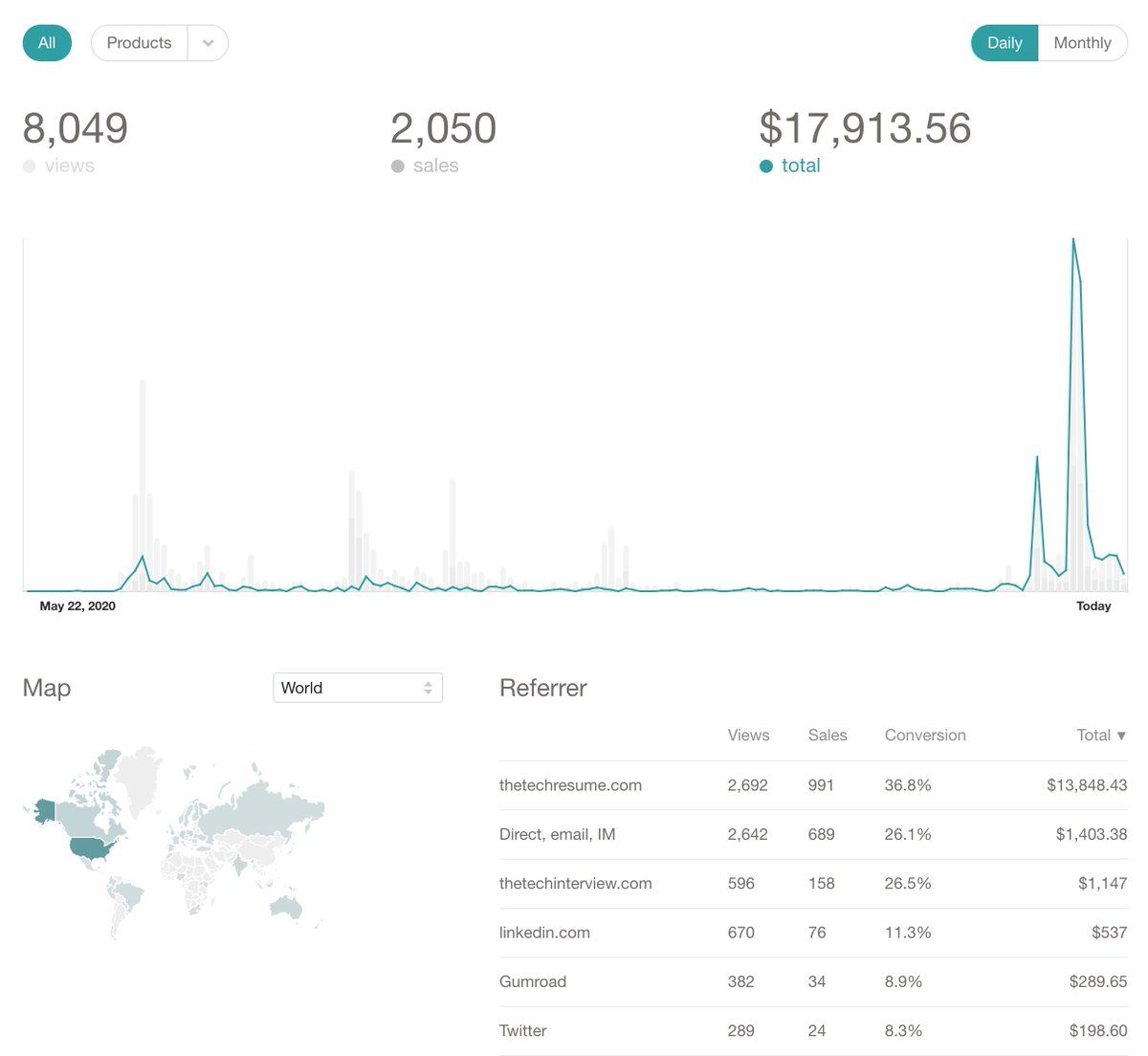
"Can you summarize this 200-page dev resume book in 7 tweets or less?"
Challenge accepted. Here we go.
1. Know what the goal of your resume is. This is what most people get wrong. It's not about your professional history. It's to get that next call with the recruiter/HM. (1/7)
Challenge accepted. Here we go.
1. Know what the goal of your resume is. This is what most people get wrong. It's not about your professional history. It's to get that next call with the recruiter/HM. (1/7)

2. Understand how the hiring pipeline works: who will read your resume, and what your competition is at smaller, vs larger companies.
Know that an employee referral *dramatically* increases your chances of passing the resume screen round. (2/7)



Know that an employee referral *dramatically* increases your chances of passing the resume screen round. (2/7)
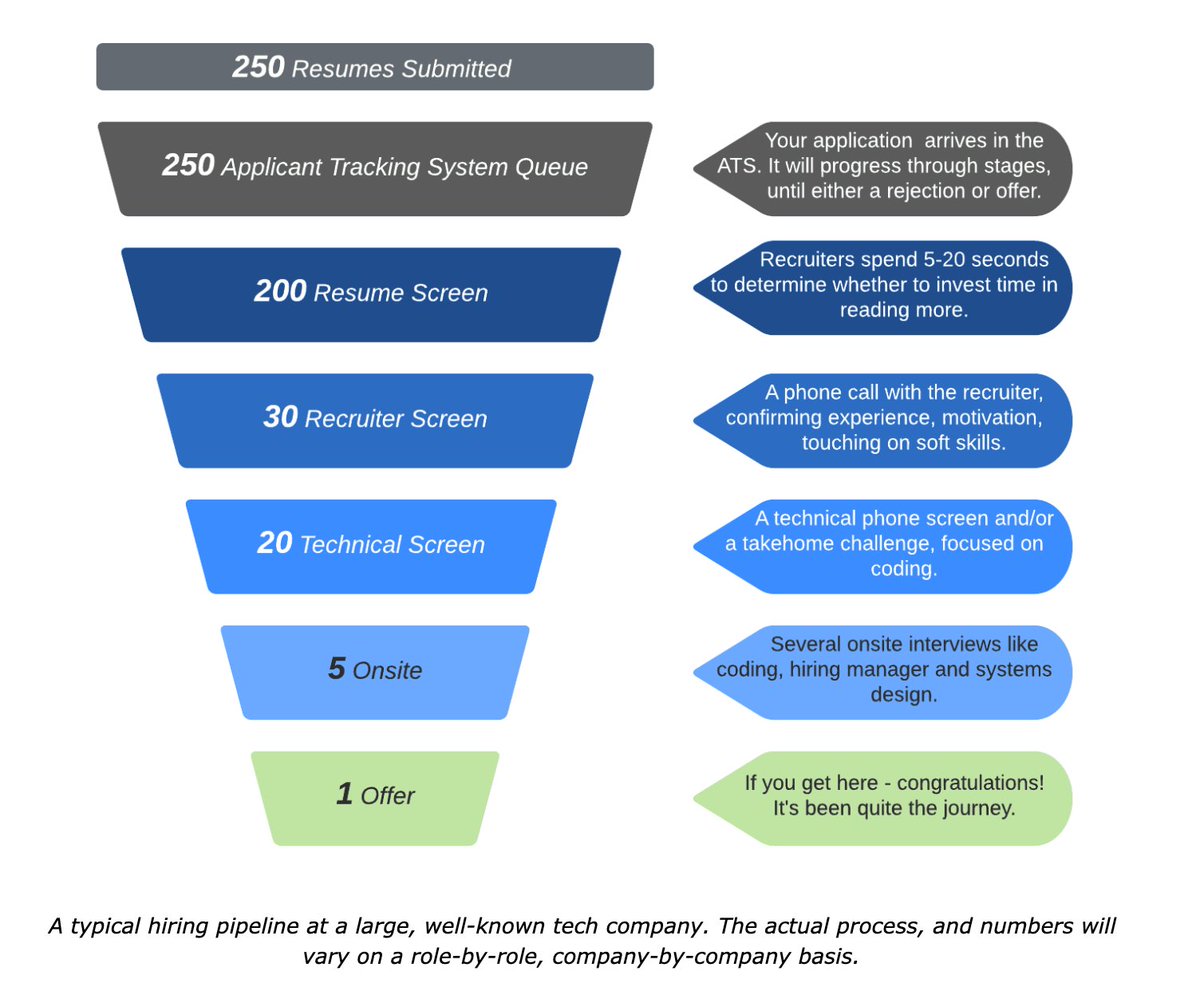


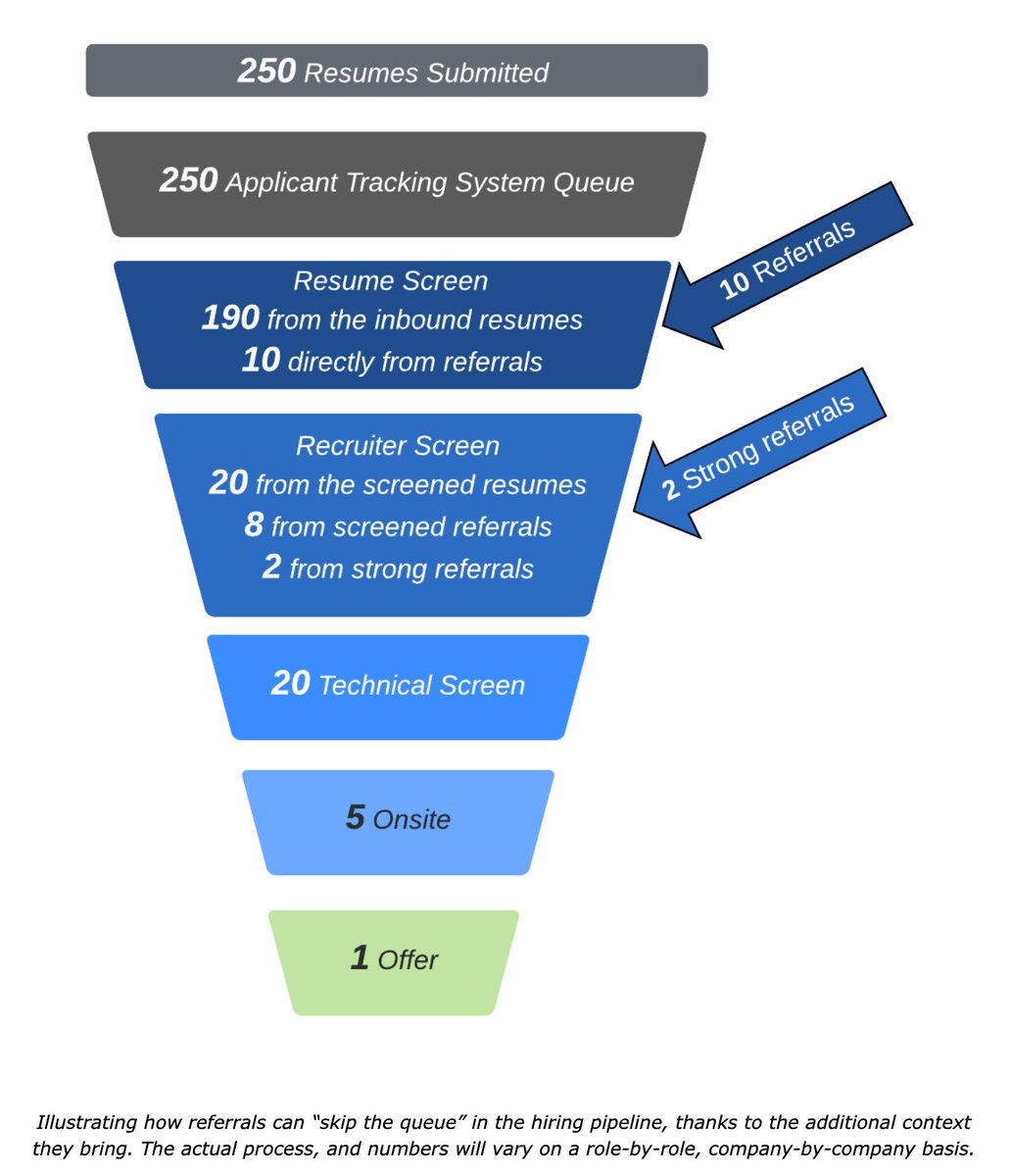
3. Use an easy-to-scan template. Recruiters do a quick scan, then a thorough scan (if they find key details in the quick scan). Make this "quick scan" as easy as possible.
Here's a good template from the book: blog.pragmaticengineer.com/the-pragmatic-… (3/7)



Here's a good template from the book: blog.pragmaticengineer.com/the-pragmatic-… (3/7)
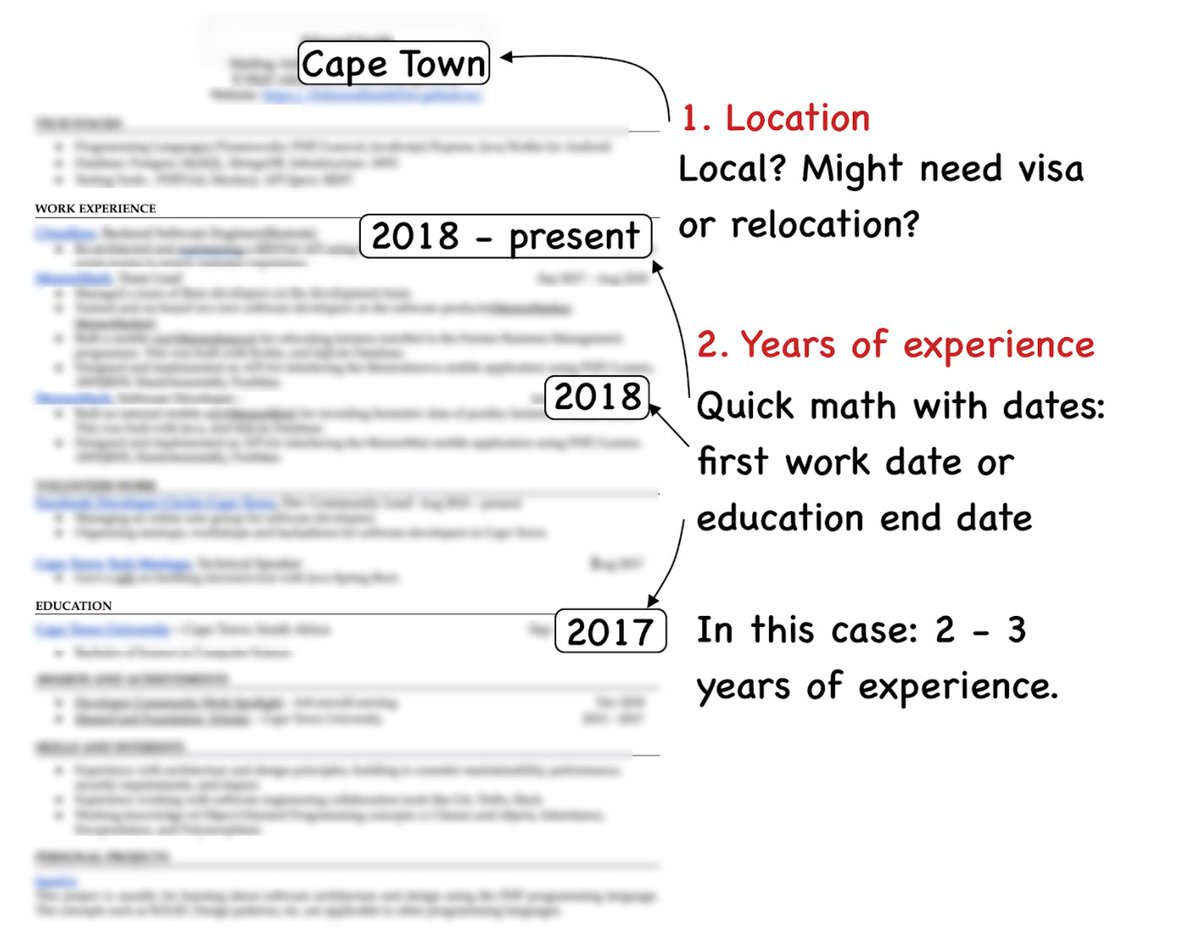

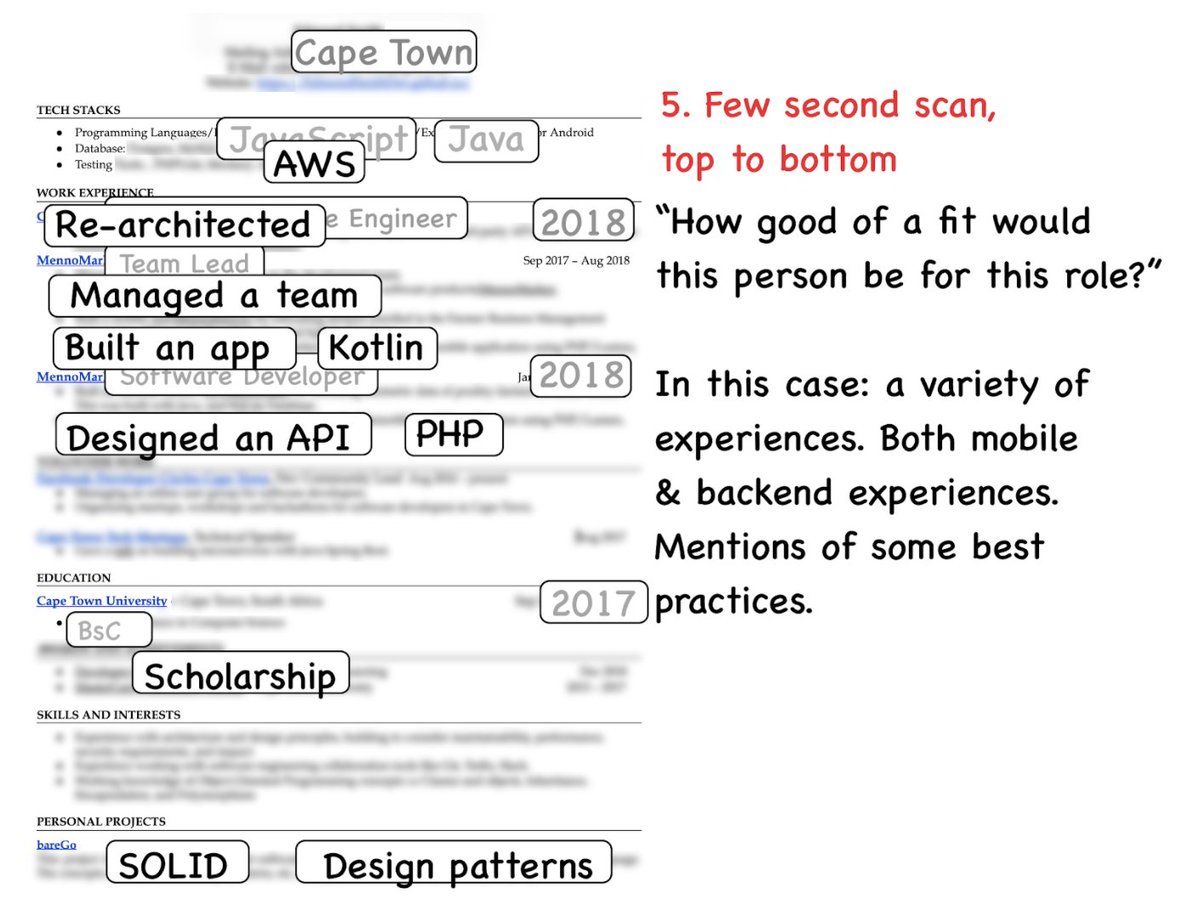

4. Structure: start with relevant things first. This will be different when your're a new grad, vs with work experience.
And don't forget a key section: languages and technologies. You can go about a few ways about that one: thetechresume.com/samples/resume… (4/7)
And don't forget a key section: languages and technologies. You can go about a few ways about that one: thetechresume.com/samples/resume… (4/7)

5. To stand out, use numbers, talk about what *you* did and what results you achieved.
Recruiters too often see descriptions like the first image. Don't be this person. Use numbers, active language and talk about specifics. Here's a "before" and "after" example. (5/7)


Recruiters too often see descriptions like the first image. Don't be this person. Use numbers, active language and talk about specifics. Here's a "before" and "after" example. (5/7)



6. Tailor your resume to the position, and don't forget about things that can support your job hunt: LinkedIn and GitHub. Have GitHub README: here's mine github.com/gergelyorosz
Oh, and don't worry about "ATS robots". That's just made up. thetechresume.com/samples/ats-my…
(6/7)
Oh, and don't worry about "ATS robots". That's just made up. thetechresume.com/samples/ats-my…
(6/7)

7. That's the summary with space to spare.
The devil is in the details, so that's what the other 200 pages are about. And that's after a lot of editing! You can read a few more chapters here: thetechresume.com/table-of-conte…
The devil is in the details, so that's what the other 200 pages are about. And that's after a lot of editing! You can read a few more chapters here: thetechresume.com/table-of-conte…
• • •
Missing some Tweet in this thread? You can try to
force a refresh

